Indonesia Matters: Emerging Market to Economic Powerhouse
Oleh : Faqih Addien Al-Haq, S.EI | Senin, 04 Maret 2024 - 21:30 WIB
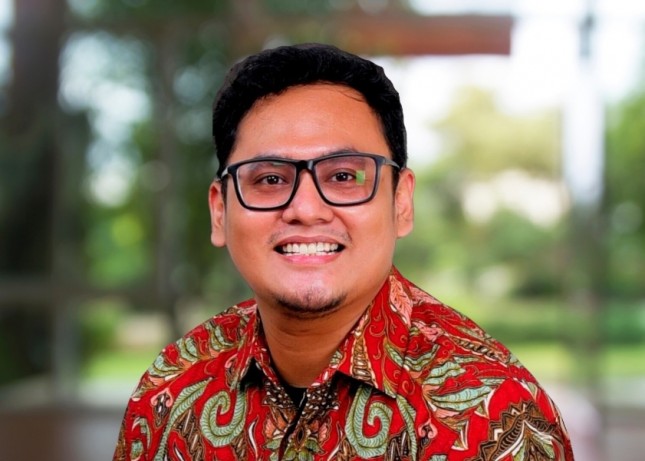
Faqih Addien Al-Haq, S.EI
INDUSTRY.co.id - Indonesia is the largest country in Southeast Asia and a resource-rich nation with a population of more than 270 million people spread across thousands of islands stretching from India to the Pacific Ocean. It is the world’s largest Muslim-majority state and the third-biggest democracy. But for many years, Indonesia remained the world’s largest invisible economy and full of obscurity. The economy is driven by informal economic activities, untraceable transactions, unbankable merchants, and completely unclear.
Indonesia has enjoyed economic growth since 1980’, but it was tampered down by the unexpected Asian financial crisis in 1997. The crisis itself made the political situation turmoil and the structure of the state reformed. Since then, Indonesia has tried some ways to regain its position as one of the rising star of global economies.
In recent decades, Indonesia has successfully attained global attention as a shining star in Asia. Indonesia woke itself as a sleeping giant. It’s successfully driving the economy into a highly successful industrial rising-power house. During this time, Indonesia’s economy continued to grow at an average of 5% each year, excluding the period of the Covid-19 pandemic. Even then, Indonesia bounced back and recovered rapidly after the pandemic hit the global economies all over the world. The last time Indonesia grabbed the attention of the world was when the crony capitalist system crumbled amidst the Asian financial crisis, marking the end of the 32-year-long leadership of President Soeharto.
The World Bank positioned Indonesia as one of the ‘upper-middle income’ countries and Indonesia eagerly continues its ambition to become one of the high-income countries by 2045 aligning with its fortunate majority of the population that is classified as working age. For the time being, Indonesia is still one of the developing countries. But, for a fact, it has rich and versatile experiences through the crisis of economics, as well as cultural and political things.
During this time, Indonesia got the spotlight again with the roleplaying of strategic movement between The United States of America and the People’s Republic of China. Just like the emerging markets who reassessing their positioning on the new world order caused by the declining supremacy of The Western beneath the hood of the silent-engine of electric vehicles and all the apps used by millions of customers.
Big Consumer
As the 7th largest economy by GDP, Indonesia has been projected to boost itself into 5 largest economies in the world by 2024. The economy is transforming rapidly with the young population and quickly urbanizing, lighting the fire of growth.
For the next 10 years, there will be an influx of more or less 90 million additional consumers with significant spending power, bridged by digital services that help create a more integrated consumer market. This rate of growth in Indonesia’s consuming class is faster and stronger than any economies in the world apart from China and India.
Many outsiders assume that Indonesia is just like a typical Asian manufacturing exporter, driven by its growing workforce coming from its large population or a commodity exporter coming from its huge abundance of natural resources.
The reality, it is domestic consumption rather than exports and services rather than manufacturing or resources, that are the engine of the growth. With the youngest population in the Southeast Asia region, where 25% are under 15, Indonesia poses a massive consumer market.
The Gross Merchandise Value, which represents the value of goods sold through the customer to customer or e-commerce platforms (e.g Tokopedia, Shopee, TiktokShop, etc), has risen 87% from USD 41 billion in 2019 to USD 77 billion in 2022, in three-span of years which Covid-19 pandemic hit the world.
It presents the adaptability and resilience of Indonesian people, supported by government-led digitalization, and the progress of how MSMEs turned into formal businesses and registered as legal bankable entities.
Well, there was a time when natural resource exports propelled Indonesian economic growth, but its contribution has declined since 2000, despite booming resource prices. Mining and oil and gas now represent only 9% of Indonesia’s nominal GDP.
Strategic Commodities
Another reason why Indonesia gained the attention of global economies is their one-fifth world’s nickel reserves, a strategic ingredient in the process of making batteries that power electric vehicles.
Additionally, Indonesia is also one of the biggest sources of cobalt, another vital input for batteries. As the West, China, and India increase their incentives to attract investment all around the world at home, Indonesia sees this opportunity to build new industrializing forces that process the essential resources to drive an economic revival and accelerate the rate of growth. The policies implemented by the government in recent years built attractive incentives for foreign investors.
Besides, Indonesia has a tradition of not taking sides in global conflict that goes back to the 1950s as a Non-Block. This makes a good choice for both Chinese and Western investors, where this stance has transformed Indonesia into an arena of companies and investors engaged in fierce competition.
Promising Infrastructure & Policies Development
Another thing that has greatly influenced investor interest in the last decade is substantial investment in infrastructure.
Since being elected President in 2014, President Joko Widodo has built 16 new airports, 18 new ports, 2,100 kilometers of operational toll roads, and 36 new dams. The figures raised Indonesia’s position by 10 positions (the highest progressiveness in the world) in the IMD Competitiveness Index, from rank of 44 to 34. This can occur because measuring competitiveness goes beyond just looking at the size of GDP expenditure or production.
Competitiveness is also evaluated based on the effectiveness of the infrastructure in supporting industry, the strength of institutions, and the policies that focus on generating added value.
In terms of the last one, the 2014 Indonesia policy to ban the export of unprocessed raw materials has recently begun to yield positive outcomes.
The policy that raw commodities can no longer be exported from Indonesia without adding value, compels companies to refine raw materials within the country, thereby sparking new investments, particularly in the metal processing industry and drawing foreign investors to Indonesia. It has provided the most obvious boost to growth in recent years.
Indeed, according to the report provided by the Ministry of Investment, there has been a significant increase in investments in regions known for producing resources like nickel and cobalt, such as North Maluku and Central Sulawesi.
The report highlights that the rate of investment growth in these areas is not only substantial but also surpasses the overall national investment growth rate. This indicates a strong interest and optimism in the potential of these regions for mining and related industries.
Up until now, the extent of these investments has gone beyond what was initially anticipated. Companies such as LG Energy Solution and Hyundai from South Korea have successfully implemented their plans by beginning the establishment of a factory for electric vehicle batteries in Central Java. Furthermore, there have been efforts by the government to attract Tesla, a leading electric vehicle manufacturer, to consider setting up operations in the same region.
What stands out from the last mentioned investments is the decision to locate the industry in Central Java, a region where the GDP per capita is currently only about USD 3,000 per person.
This figure is significantly much lower than the GDP per capita in Jakarta and its surrounding areas, which is roughly USD 19,000 per person. This disparity highlights the contrast in economic development between Central Java and the more affluent regions of Jakarta.
This situation leads to a positive effect on promoting development that is both inclusive and equitable. By focusing on areas with lower economic development, such as Central Java compared to Jakarta, investments can help bridge economic disparities. This approach ensures that the benefits of growth and development reach a wider section of the population, fostering a more balanced and fair progress across different regions.
Indeed, the primary challenge faced by emerging economies, including Indonesia, has been achieving growth that is both inclusive and equitable whether it’s in their metropolitan city or remote areas.
Yet, the digital revolution of the past several years has significantly addressed some of the issues of inequality within Indonesia. Specifically, the rapid surge in e-commerce has democratized access to markets, enabling individuals to sell products from any location including rural and isolated regions across Indonesia.
In Indonesian e-commerce, you can buy almost anything you want. The merchants will send the goods anywhere through the courier services.
Currently, this phenomenon has led medium-sized cities like Medan, Makassar, Bandung, and Surabaya to experience an annual economic growth rate of 7.5% over the last five years. In comparison, Jakarta, the nation’s capital, has seen a slightly lower growth rate of 6.3%.
These medium-sized cities have played a crucial role in boosting the national economic growth rate to 5%. While this rate exceeds the global average of 3.6%, it still falls short of the growth averages seen in countries like China, India, and Vietnam.
Challenges Ahead
As mentioned earlier, Indonesia experienced and enjoyed economic growth before the Asian financial crisis in 1997-98. The average annual growth rate was slightly higher than 7%.
However, after the crisis occurred, the growth rate couldn’t bounce back to the level it was. Mostly due to the lack of ability of the manufacturing sector to grow as fast as before.
The fact that Indonesia managed to recover from the crisis itself is relieving its people. Indonesia can also avoid the major impact of the 2008 financial crisis due to Indonesia’s lack of ties to the global financial and trade system.
Anyhow, during a decade of President Susilo Bambang Yudhoyono’s presidency from 2004 to 2014, the growth didn’t reach 7%, floating around 5% annually.
When President Joko Widodo took the seat, he addressed that building and maintaining infrastructures are the main challenges to attracting foreign investments.
The lack of essential infrastructures like roads, ports, airports, and energy generators discouraged further investment. However, after almost a decade drained the fiscal budget to be focused on infrastructures, it still became a hindrance to the investment.
The high cost of energy and transportation made it impossible to invest further due to the term of diminishing return on investment. In 2022, the net inflows of Indonesia’s Foreign Direct Investment (FDI) made only 1,6% of GDP, much lower than ASEAN peers such as Vietnam with 4,4% of GDP and Thailand with 2,1% of GDP. Since FDI is usually in line with increased productivity and a positive impact on the economy, the low figure represents the inefficiency of investment.
Another issue that holds back the investment and the development of the manufacturing sector is the lack of substantial productivity improvements. It includes labor market issues, uncertainty of business climate, and wiggling policies on economic reform.
However, the most influential thing is the productivity output per hour by Indonesian workers which is lower compared to neighboring countries such as China, Malaysia, and Thailand. One of the reasons for low productivity is the low public spending on the development of its people through education, healthcare, and social assistance.
In nominal terms, even though it has been rounded up to reach 700 trillion rupiah in 2022, public spending in these sectors is only 3.5% of GDP. Whereas the average emerging economy in Asia invests more than 10% of its GDP on development.
The last issue that haunts the economy for a long time and discourages foreign investment is corruption. Indonesia’s Corruption Perception Index (CPI) released in 2023 shows the most drastic decline since 1995. The CPI figure fell four points compared to the previous year.
This condition positioned Indonesia to 110th place out of 180 countries surveyed, putting the economy much worse than China, India, Malaysia, Vietnam, and Thailand.
Indonesia will be able to continue to maintain the spotlight by progressively resolving existing challenges and providing a clear and visible outline of its economy to the global world. With the substantial deposits of strategic minerals, Indonesia is ready to play a significant role in the global trending electric-vehicle industry and all the supply chain within the business environment.
The successful project will improve the quality of life of one third billion people and even swing the global balance of power.
Penulis adalah Faqih Addien Al-Haq, pegawai pada Kedeputian Bidang Perekonomian, Sekretariat Kabinet
Baca Juga
Mengamankan ‘Tulang Punggung’ Digital Indonesia dengan Solusi…
Revitalisasi Koperasi melalui Pembangunan IKN Nusantara
Analisa Apakah Ada Potensi Moral Hazard Borrower Fintech P2P Lending?…
Etika dan Tanggung Jawab Pemimpin dalam Kasus Peretasan Data
Transisi Sertipikat Tanah Elektronik: Pemerintah Harus Bijak, Jangan…
Industri Hari Ini
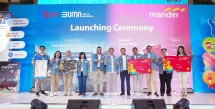
Sabtu, 27 Juli 2024 - 08:18 WIB
Penuhi Kebutuhan Lifestyle, Bank Mandiri Luncurkan Mandiri Lippo Malls Card dan Solusi Valuta Asing
Bank Mandiri bersama Lippo Malls, anak perusahaan Lippo Group memperkuat kolaborasi dengan meluncurkan kartu kredit co-branding Mandiri Lippo Malls Card. Lewat inovasi ini, diharapkan dapat…

Sabtu, 27 Juli 2024 - 07:12 WIB
Siap-Siap, Bakal Banyak Kejutan di Pameran INDOBEAUTY EXPO 2024
Jakarta-Industri kosmetik Indonesia kian menjanjikan dan diproyeksi akan terus berkembang pesat sejalan dengan masifnya perkembangan e-commerce di Indonesia. Merujuk data yang dilansir Badan…

Sabtu, 27 Juli 2024 - 06:43 WIB
Siloam Hospitals Mampang Memperkenalkan Perawatan Komperhensif Tulang Belakang
Jakarta – Perkembangan yang menggembirakan bagi pasien yang menderita penyakit terkait tulang belakang, Siloam Hospitals Mampang dengan bangga mengumumkan pengenalan teknik bedah tulang belakang…

Sabtu, 27 Juli 2024 - 06:35 WIB
Berbagai Pertunjukan Artis Menambah Kemeriahan Akhir Pekan Pameran GIIAS 2024
Tangerang– Para peserta GAIKINDO Indonesia International Auto Show (GIIAS) 2024 tidak hanya menawarkan beragam inovasi dan teknologi terbaru dalam dunia otomotif, tetapi juga menyuguhkan hiburan…
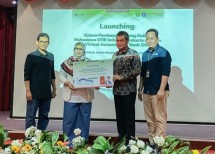
Sabtu, 27 Juli 2024 - 06:18 WIB
Perluasan Produk Perbankan Syariah Bank DKI di Dunia Pendidikan, Bank DKI Tandatangani Nota Kesepahaman Bersama Yayasan Pendidikan Fatahillah Jakarta
Jakarta – Dalam rangka memperluas penggunaan produk perbankan syariah Bank DKI, khususnya di dunia pendidikan, Bank DKI bersama Yayasan Pendidikan Fatahillah Jakarta sepakat menjalin kerja…







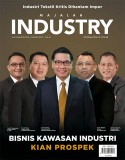

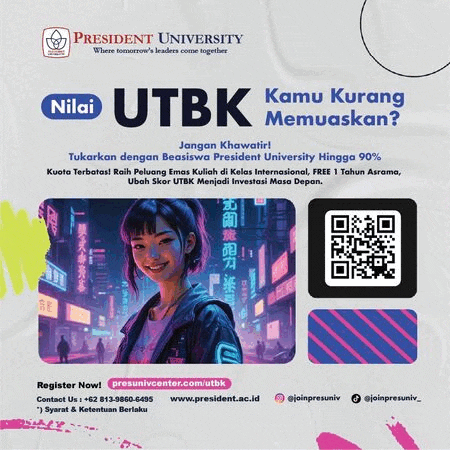




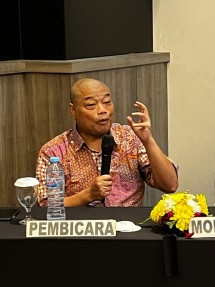


Komentar Berita